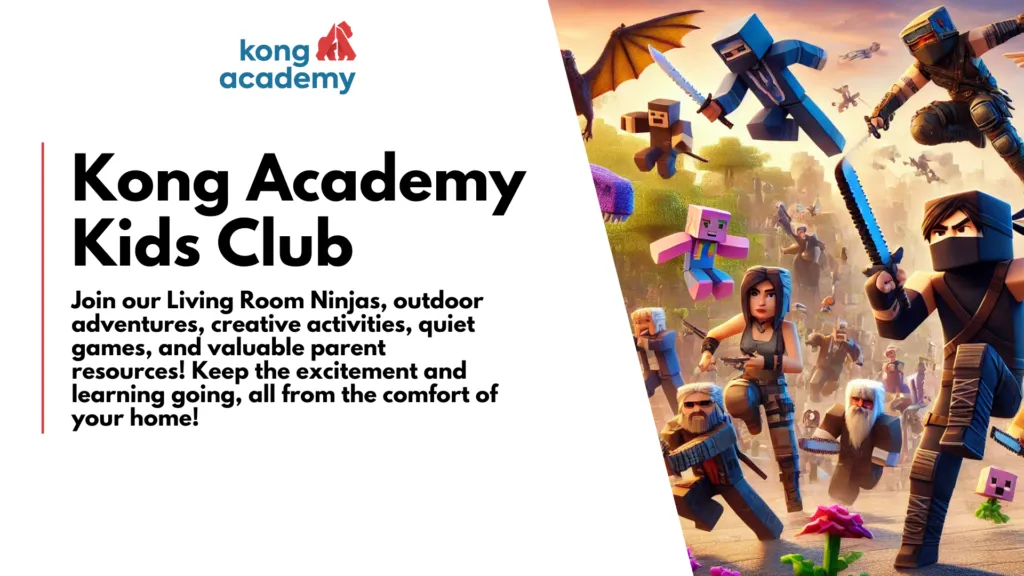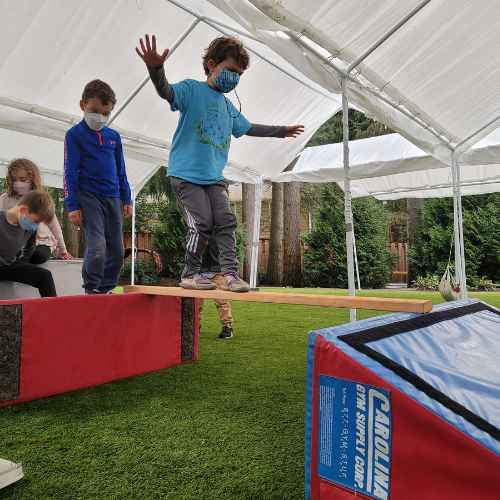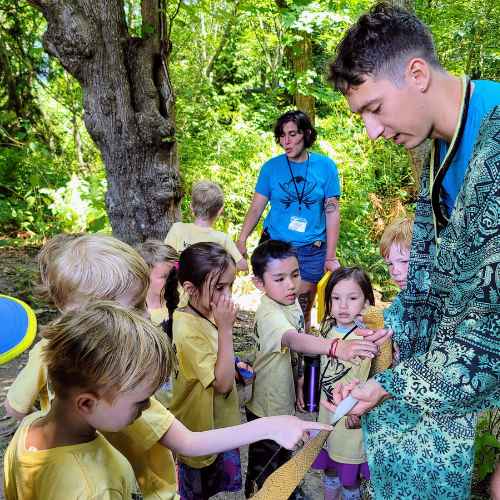
Wondering how students with a growth mindset see their mistakes? The short answer: not as a failure. Here’s how Kong Academy helps kids reframe slip-ups as stepping stones—through play, movement, and practice.
Ever watched your kid absolutely lose it over a misspelled word, a fallen block tower, or a game that didn’t go their way? Cue the crumpled paper, the dramatic sigh, and the sudden declaration that they’re “the worst at everything.” Fun times.
But messing up is actually where the magic happens. At least, it is if your kid’s brain is wired to see mistakes as part of the process—not the end of the road.
At Kong Academy, we teach kids that failure is a signal that their brain is growing. That trying again (and again) is how real skills are built—whether they’re climbing a wall in parkour, figuring out how to share a game, or managing big emotions after a rough day.
So how do kids with a growth mindset respond to mistakes? And how can you help your child go from meltdown to motivation? Let’s dive in.
What A Fixed Mindset Actually Looks Like In Kids
You don’t need a psychology degree to spot a fixed mindset. If you’ve heard any of these phrases around your house lately, you’re already familiar:
- “I can’t do this!”
- “I’m just not good at math.”
- “I quit.”
- “She’s better than me, so what’s the point?”
- “If I don’t win, I’m not playing.”
Sound familiar? That’s the voice of a fixed mindset—a way of thinking that says you’re either good at something or you’re not. Period. No room for growth, no in-between, no messy learning curve.
And kids aren’t born with this mindset. They pick it up—sometimes from the pressure to be “the smart one,” from fear of failure, or from adults accidentally praising the result (“You’re so smart!”) instead of the effort (“You really worked hard on that!”).
The problem is that when a child believes their ability is fixed, they see every mistake as proof they can’t—not proof that they’re learning.
How Students With a Growth Mindset See Their Mistakes In Action
Now here’s where things get exciting. A kid with a growth mindset isn’t afraid of making mistakes—they’ve been trained to expect them. And better yet, they know how to bounce back.
It sounds like this:
- “That was hard, but I’m getting better.”
- “I messed up, can I try again?”
- “Wait—I figured it out!”
- “I’d like to try again tomorrow.”
- “I haven’t learned that yet.”
This kind of self-talk reflects a child who understands that effort and learning go hand in hand. That failure is temporary. That persistence pays off. And this resilience in kids doesn’t happen by accident—it happens through repetition, support, and the right kind of experiences.
Kids with a growth mindset don’t crumble when they mess up. They know that mistakes are normal—and even necessary for learning. That’s why students with a growth mindset view mistakes as stepping stones, not setbacks.
How Kong Teaches This Through Play
This is what we know: kids don’t need a lecture on growth mindset. They need chances to live it.
At Kong Academy, we use movement, parkour, problem-solving games, and story-based adventures to help kids build confidence and resilience. Whether it’s navigating an obstacle course or figuring out how to work as a team, they’re learning how to handle setbacks—without ever calling it a “lesson.”
These are real-life opportunities for kids to experience how students with a growth mindset see their mistakes: as part of the process, not the end of the story.
A kid misses the landing? They try again. A team can’t solve a puzzle? They regroup. Someone gets frustrated? We guide them through the emotion and back into the challenge.
These are whole-brain, whole-body experiences that teach persistence, emotional regulation, and self-awareness in the moment.
How Parents Can Support It At Home (Without Losing Your Mind)
You don’t need a Pinterest board or a behavior chart. Supporting a growth mindset at home can be real, relaxed, and totally doable.
- Praise effort, not just results.
Swap “You’re so smart” for “You really stuck with that even when it got tricky.” Kids internalize what you notice. - Add the word “yet.”
If they say “I can’t do this,” help them reframe: “I can’t do this… yet.” - Normalize failure.
Talk about your own flops. Let them see that grown-ups mess up too—and that it’s not the end of the world. - Ask better questions.
Try: “What was something tricky you figured out today?” or “What mistake did you learn from?” Questions like these make room for reflection and growth. - Make time for unstructured play.
Games and physical activity are the best vehicles for teaching kids how to fail safely and try again joyfully.
When you understand how students with a growth mindset see their mistakes, you realize something important: mistakes aren’t the end—they’re the beginning. When kids learn to see failure as a stepping stone, not a stop sign, you give them a gift they’ll carry for life—the belief that they can grow.
At Kong Academy, we help your child practice this belief every single day—through play, movement, laughter, and challenge. They won’t just learn how to keep going after a setback… they’ll actually want to.
Ready to help your kid build resilience, confidence, and a growth mindset they’ll carry for life? Check out our Summer Camps and Afterschool Programs—where mistakes are part of the mission, and learning happens through movement, laughter, and play.
GET Access to the ULTIMATE PLAY DATE PACKAGE (Value: $49) for FREE!
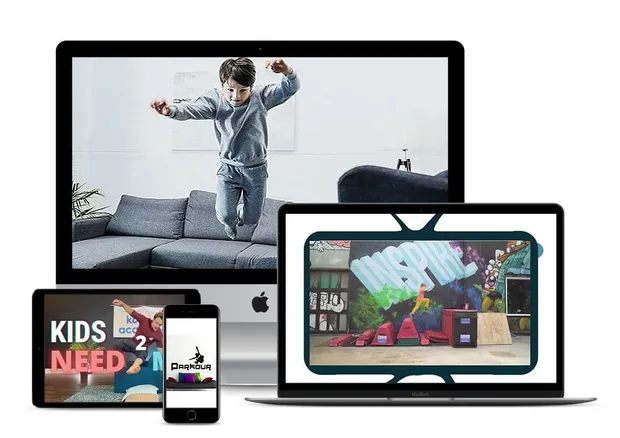
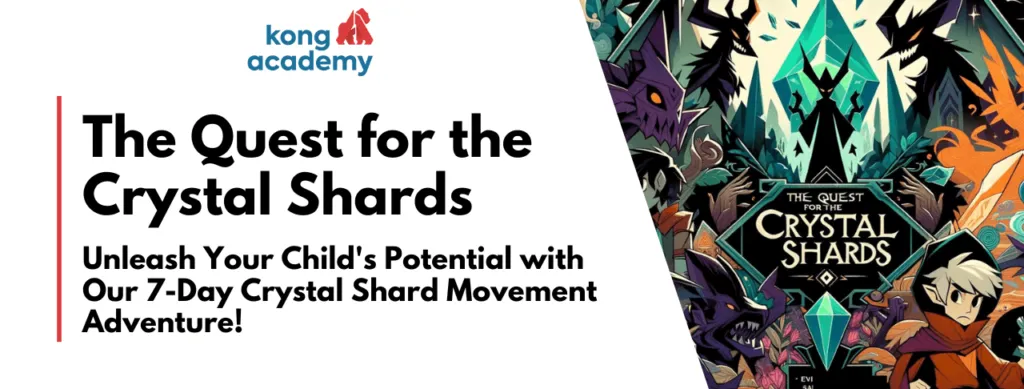
7-Day Crystal Shard Adventure
Unleash your child’s potential with our 7-day crystal shard movement adventure!

